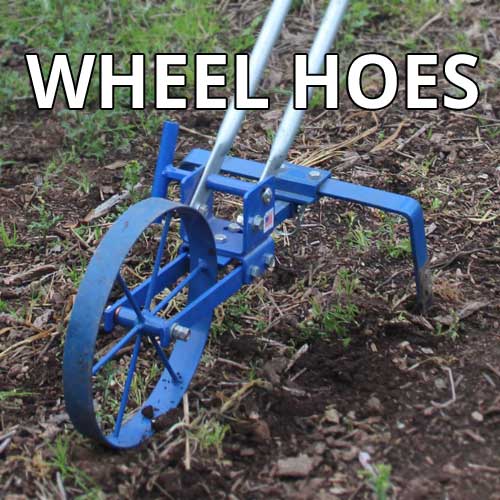Winter Gardening Tips
Posted by David Grau on
Originally Posted on December 21, 2013
Happy Holidays! Winter Solstice is upon us and our days will now slowly begin to grow longer. We still have plenty of long nights in front of us, yet the Solstice always instills a sense of beginning to many of our farming and gardening friends.
David and Carla recently visited the Chico Farmers Market and saw such abundance of produce, eggs, nuts, and other local wonders. Our friends at GRUB had a supply of many root vegetables, including the sweetest carrots around. GRUB carrots are quite large (up to 3" in diameter), yet are so tender, sweet, and delicious. Their beets, potatoes, and parsnips are also superb. They had lovely cabbages too.
Quail, chicken, and duck eggs were for sale. Local Pistachios, walnuts, and almonds were available too. It was a cold but sunny day, and the bounty at the year-round market was inspiring to see.
Winter Gardening Tips
Water, or wait for rain?
We've been having a dry spell here in Chico. Our last rain is a distant memory and while the soil still holds some of that moisture, we must irrigate certain plantings, like our rows of garlic and onions.
Some areas of the garden, which had been heavily mulched, still had quite a lot of moisture in them. This kept the soil so soft and pliable that we only needed to take a few passes with the wheel hoe with the furrower attachment on it to be ready to plant some spring-flowering bulbs. The bulbs, once planted, were lightly mulched and watered, and should put on a good show in the spring.
We asked Carl Rosato of Woodleaf Farm if he is irrigating his orchard during this dry spell. He let us know that his orchard received 2 inches of rain about three weeks ago, and the soil is just starting to show some dryness. He told us that he is going to wait for rain, but that he is hand-watering an area of clover and wildflowers that he sowed just before the rain, and also keeping his mind on areas of his farm which might need irrigating should the rain be delayed.
Carl is planting ten new Warren pear trees in his orchard. He chose this variety because it doesn't get fireblight, and he says they have the best eating qualities of all his pears.
He started the pruning of his peaches in the orchard, and is about two-thirds done, and will finish them in March. He has been pruning his pears and apples with a new electric pruner, made by Felco, that is making his pruning much easier.
This time of year finds him planning for the future. He is building 24' x 60' greenhouse that will house avocado trees.
"It is a lovely season, enjoy," he said.
Chickens in the Garden
 Short days and long nights keep the chickens in the coop for much longer periods of time. We are making sure to monitor the moisture level in the coop litter. Fluffing the litter regularly, adding dry oak leaves, wood shavings, and straw all help to keep the ammonia levels low, and bioactivity in the deep litter going.
Short days and long nights keep the chickens in the coop for much longer periods of time. We are making sure to monitor the moisture level in the coop litter. Fluffing the litter regularly, adding dry oak leaves, wood shavings, and straw all help to keep the ammonia levels low, and bioactivity in the deep litter going.
To help entertain the chickens, lest they grow bored, we've opened access to a not-yet-finished compost pile, where they happily spend hours scratching apart clumps of organic matter to find grubs, worms, beetles, and other wiggly things to eat. This puts the chickens to good use, spreading the organic matter around, and removing pest larva from the pile.
What We're Reading
The War on Bugs by Will Allen
 This is a fascinating history of the propagandizing, of synthetic chemical fertilizers and pesticides, by chemical manufactures, the USDA, farm journals, and the commercial agriculture industry. Following the use of poisons in human warfare to their promotion in insect warfare, The War on Bugs explains the consequences that our farms, farmers, human populations, and entire ecosystem suffered, and continue to suffer. The use and promotion of arsenic, DDT, Cyanide, and a whole host of other toxic concoctions is explained in great detail. The book is filled with examples of real pesticide and herbicide advertisements from farm journals all the way back to the 1800s. Some of these ads will simply shock today's reader: A Dr. Seuss cartoon of a boy gargling with a pesticide because he swallowed a bug.
This is a fascinating history of the propagandizing, of synthetic chemical fertilizers and pesticides, by chemical manufactures, the USDA, farm journals, and the commercial agriculture industry. Following the use of poisons in human warfare to their promotion in insect warfare, The War on Bugs explains the consequences that our farms, farmers, human populations, and entire ecosystem suffered, and continue to suffer. The use and promotion of arsenic, DDT, Cyanide, and a whole host of other toxic concoctions is explained in great detail. The book is filled with examples of real pesticide and herbicide advertisements from farm journals all the way back to the 1800s. Some of these ads will simply shock today's reader: A Dr. Seuss cartoon of a boy gargling with a pesticide because he swallowed a bug.
The book takes us all the way up to the year 2004 and shows charts and statistics of just how much pesticide use is going on in modern crop operations. He shows the staggering amounts of chemicals are being used on carrots, onions, peaches, strawberries, watermelons, and spinach. All the more reason to seek out locally-produced food, where you can talk to the person who grows it, and ask them about their farming practices.


